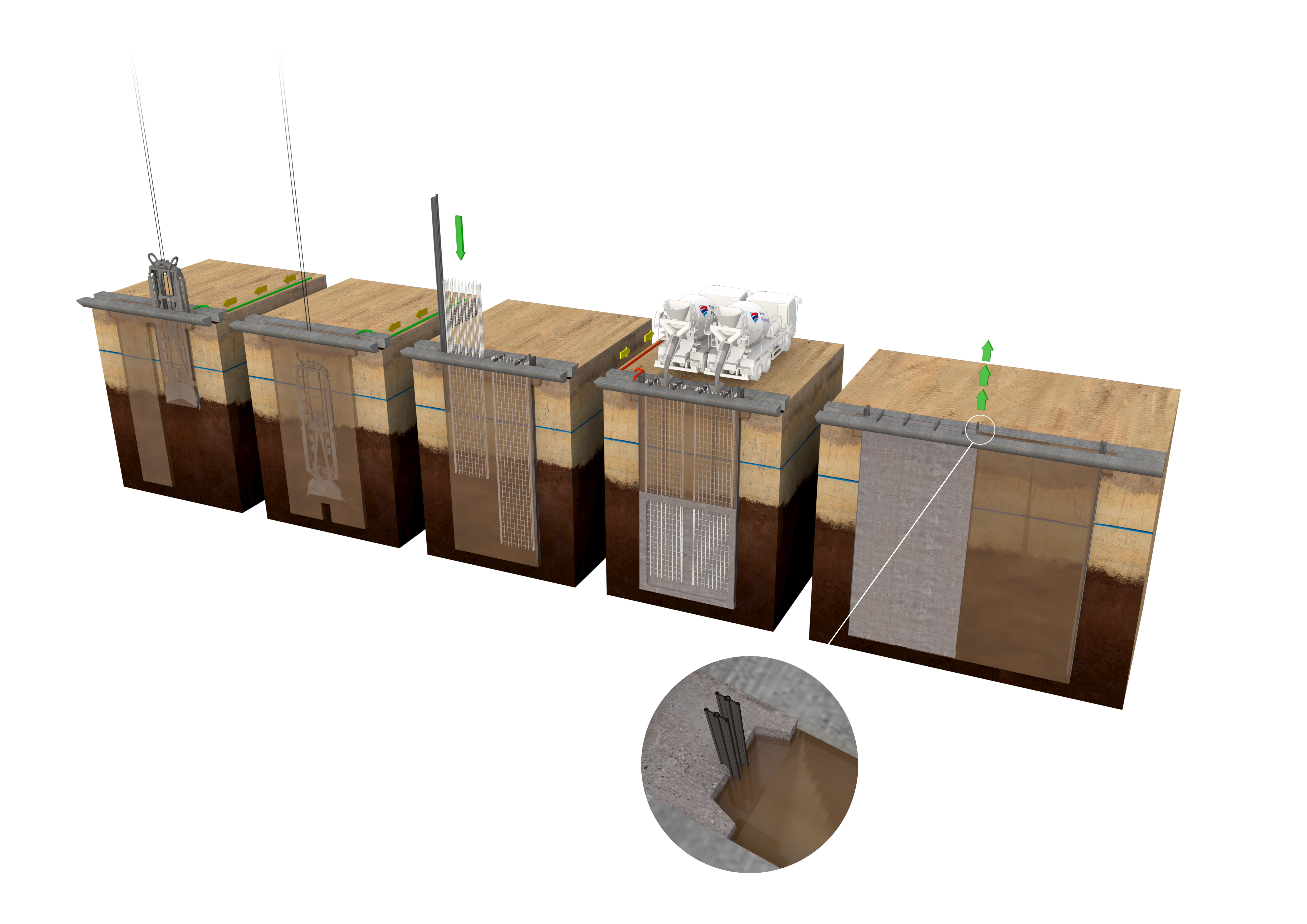Installation process in accordance with the requirements of NBN EN1538:1999
1. In advance construction of temporary guide walls and excavation of (the first) lamella with grab – continuous filling of the trench with the thixotropic stabilizing fluid.
Excavation of the first rectangular panel, followed by the excavation of the second one (alternating method).
In order to avoid instability of the trench, the level of the bentonite slurry in the excavation trench should at any moment be maintained at least 2 m above the highest water level in the full height trench, especially in the case of an artesian aquifer.
2. Panel excavation in progress: excavation of the central panel or “merlon” located between the two previously excavated panels.
3. Desanding or replacement of the bentonite suspension.
After reaching the required installation depth the lamella (= combination of several single panels) is equipped: insertion of reinforcing cage and removable flat steel joint elements with PVC joint tapes, called “water stop”, at both lamella fronts (see detail of plasticized PVC water stop or water bar).
4. Concreting of the lamella by the tremie pipe method (one or more tremie pipes, depending on the size of the grab) and at the same time, recycling of the bentonite slurry
5. Removal of the temporary formwork or joint elements after concreting – the water stop membranes remain.
